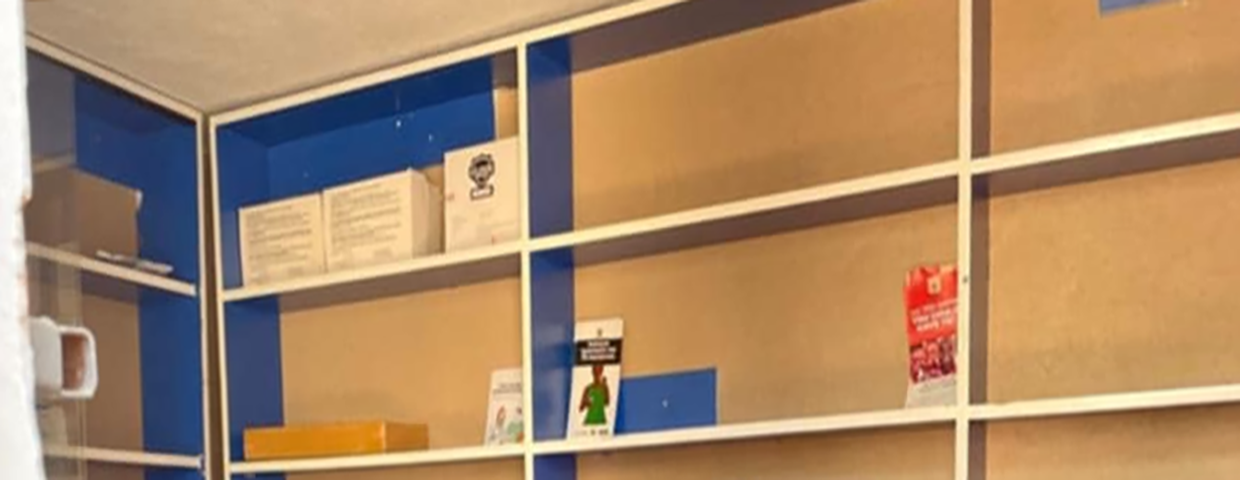Reduced dosing: a possible crisis response to ART stockouts and closed clinics
5 May 2025. Related: Special reports, Antiretrovirals, Treatment strategies, Treatment access.

Simon Collins, HIV i-Base
An open access paper, fast-tracked in the journal AIDS, reviews seven studies that randomised almost 1300 participants to take ART on only 5, 4 or 3 days a week compared to daily dosing.
At week 48, there were 21 vs 22 cases of viral failure >50 copies/mL with intermittent dosing vs daily ART, respectively, and the seven studies included both NNRTI- and INSTI-based ART. Intermittent dosing generally used 4 or 5 doses a week, with only 80 people randomised to 3 doses a week.
An important caution is that these studies only enrolled people with durable viral load suppression and good CD4 counts who were not pregnant. They had no history of drug resistance and no active hepatitis B or opportunistic infections.
The studies also included frequent monitoring that enabled any early viral blips or rebound to be managed with adherence support or a switch back to daily ART.
Additional research is needed with more complex HIV histories before the results could be generalised to a wider population and in settings with reduced monitoring. The studies were also generally small, with all but one having less than 200 participants.
Nevertheless, the results suggest that reduced dosing might safely become part of a crisis response to the changes in US international aid since 20 January. These changes already threaten ART for more than 20 million people living with HIV in low- and middle-income countries (LMICs).
The review also refers to another large RCT in 400 adolescents, which is already completed and likely to be presented at IAS in July. [2]
French HIV guidelines also currently include the option in selected cases to only take ART for 4 or 5 days each week, largely based on results from the QUATUOR study. [3, 4]
comment
The dismantling of USAID and other international US HIV programmes in more than 50 LMICs countries has closed thousands of community health clinics globally and jeopardised continued ART for more than 20 million people.
Interrupted access to ART has already forced some people living with HIV to either stop treatment or access new services. In some countries, people now have to pay for ART and at inflated prices. [5]
Cancelling US aid without notice has caused maximum disruption and harm. It also dismantled the monitoring structures that would have been able to track the extent of current disconnection from care.
Whatever interim measures are established there have already been supply issues, and stockouts are likely to become common in many low- and middle-income countries. Very few governments have responded by guaranteeing uninterrupted ART for their citizens and there is no evidence that countries with steadily dwindling stocks are re-ordering. [6]
As part of a careful strategy, reduced or intermittent dosing is likely to be preferable to interrupting ART, at least for a bridging period until universal access to ART is re-established.
This would also minimise the risk of HIV transmission as HIV prevention services are also in crisis.
Stopping ART leads to detectable viral load within 2-4 weeks in the majority of people. This then rapidly rebounds to very high levels making the risk of transmission extremely high. This will be happening against a background of years when an undetectable viral load on ART would also have protected sexual partners, and when closed clinics have made access to condoms and PrEP scarce.
The dynamics of viral rebound mean that interrupting ART on a population level will lead to very high risks of new HIV infections at a time when testing services have been depleted and early ART is impossible.
An HIV prevention disaster is already underway.
Simon Collins is also a co-author on the paper in AIDS.
References
- Hill A et al. Could reduced dosing maintain more people on antiretrovirals after the sudden cuts in USAID funding? A crisis response. AIDS DOI:10.1097/QAD.0000000000004212. (22 April 2025).
https://journals.lww.com/aidsonline/abstract/9900/could_reduced_dosing_maintain_more_people_on.692.aspx - Kekitiinwa-Rukyalekere A et al. Breather Plus and LATA: two randomised, open-label, non-inferiority clinical trials, evaluating treatment optimisation in adolescents aged 12-19 years of age living with HIV-1 infection in Sub Saharan Africa. CHIVA Annual Conference, 22 May 2022, London.
- French HIV Treatment Guidelines. Published online December 2024. Available at: https://anrs.fr/fr/actualites/actualites/recommandations-has-traitement-antiretroviral-vih
- Landman R et al. A 4-days-on and 3-days-off maintenance treatment strategy for adults with HIV-1 (ANRS 170 QUATUOR): a randomised, open-label, multicentre, parallel, non-inferiority trial. Lancet HIV. 2023. 9: e79-90.
- Hill A et al. Could reduced dosing maintain more people on antiretrovirals after the sudden cuts in USAID funding? A crisis response. AIDS DOI:10.1097/QAD.0000000000004212. (22 April 2025).
https://journals.lww.com/aidsonline/abstract/9900/could_reduced_dosing_maintain_more_people_on.692.aspx - Kekitiinwa-Rukyalekere A et al. Breather Plus and LATA: two randomised, open-label, non-inferiority clinical trials, evaluating treatment optimisation in adolescents aged 12-19 years of age living with HIV-1 infection in Sub Saharan Africa. CHIVA Annual Conference, 22 May 2022, London.
- French HIV Treatment Guidelines. Published online December 2024. Available at: https://anrs.fr/fr/actualites/actualites/recommandations-has-traitement-antiretroviral-vih
- Landman R et al. A 4-days-on and 3-days-off maintenance treatment strategy for adults with HIV-1 (ANRS 170 QUATUOR): a randomised, open-label, multicentre, parallel, non-inferiority trial. Lancet HIV. 2023. 9: e79-90.
https://pubmed.ncbi.nlm.nih.gov/35120640 - Health Policy Watch. Bribes and Rationing of AIDS Medicine in Zimbabwe as Trump’s Aid Cuts Bite (30 April 2025).
healthpolicy-watch.news/bribes-and-rationing-of-aids-medicine-in-zimbabwe-as-trumps-aid-cuts-bite - Clinton Health Access Initiative (2025) HIV Market Impact Memo. April 2025.
https://www.clintonhealthaccess.org/wp-content/uploads/2025/03/CHAI-HIV-Market-Impact-Memo-March-2025.pdf (PDF)

